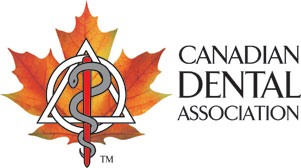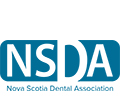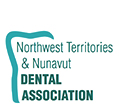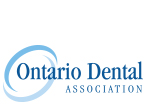The Dental Exam: An Overview Fact Sheet
The dental exam is critical to your ongoing oral health and only your dentist can perform this.
The exam consists, in part, of the dentist looking inside your mouth. In the past, you may not have ever realized an exam was taking place. Perhaps you thought the dentist was checking the work the hygienist had just completed.
Not so. The dentist actually looks in your mouth for things that can affect your oral and your overall health. Many of these are things you can't see on your own, but that a dentist is trained to detect. Here is some of what your dentist is looking for during a dental exam:
- damaged, missing or decayed teeth
- early signs of cavities
- condition of your gums, such as periodontal pockets, inflammation or other signs of gum disease (which can lead to tooth and bone loss)
- to see how previous dental work such as root canals, fillings and crowns are holding up
- early signs of mouth or throat cancer, such as white lesions or blocked salivary glands
- other suspicious growths or cysts
- position of your teeth (e.g., spacing, bite)
- signs that you clench or grind your teeth (a treatable problem that can cause headache or sore jaw and can, if serious, lead to hearing loss and tooth loss)
- signs of bleeding or inflammation on your tongue and on the roof or floor of your mouth
- the overall health and function of your temporomandibular joint (which joins the jaw to skull), checking for signs of disorders that can cause pain or tenderness
- the general condition of the bones in your face, jaw and around your mouth
The dental exam can catch problems early before you see or feel them when they are much easier and less expensive to treat.
As well as the visual inspection of your mouth, the exam includes:
- a complete medical history so the dentist knows about any health conditions that may affect the success of dental treatments or procedures or that may be associated with oral health problems.
It may also include:
- an examination of your neck area, with the dentist feeling the glands and lymph nodes for possible signs of inflammation that could indicate general health problems; and
- dental x-rays, if necessary. These can show such problems as cavities under existing fillings, fractures, impacted wisdom teeth, decay under your gum line and bone loss caused by gum disease.
Your dentist may explain what's happening during the exam and give you a summary of the findings. If not, be sure to ask. As patient, you are a full partner in your oral health care.
Checklist
Be Sure to Tell Your Dentist
The more your dentist knows about your overall health, the more effective they can be in addressing your oral health care needs. Be sure to mention:
- any new medical conditions you've been diagnosed with since your last visit, such as diabetes or AIDS, even if they don't seem pertinent. Your dentist needs to know to properly manage your treatment and prevention program.
- any new medications you're taking (side effects can often include dry mouth and overgrown gums)
- if you're pregnant
- if you have any allergies
- any changes you've noticed in your teeth, such as changes in colour, looseness or position
- any changes you've noticed in your gums, such as bleeding when you brush or floss, or changes in appearance
- any increased sensitivity to heat, cold or sweets
- whether your floss catches on rough edges, causing it to shred
- any colour changes in the skin on the inside of your mouth
- if you smoke or chew tobacco (which increases the likelihood of oral cancer)
- if your neck or jaw muscles are tight or if you're aware of clenching or grinding your teeth
- if you're nervous about going to the dentist new ways of doing things have made modern dentistry more comfortable for patients, and talking to your dentist may reassure you and help you feel more relaxed











